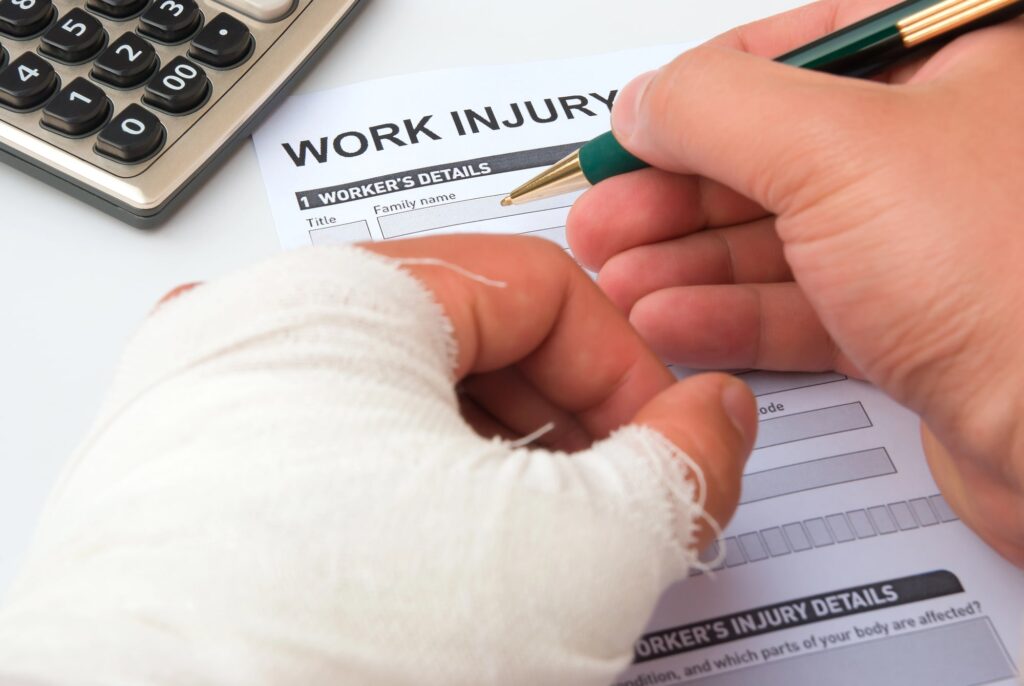
A workplace injury can occur suddenly, even when safety measures are in place. Whether it’s a fall, equipment malfunction, or overexertion, knowing what steps to take immediately afterward can help protect both health and legal rights. The first few days after the incident often set the tone for how a claim or compensation process unfolds. Attorneys with experience in this area of practice can discuss how early action matters and what workers should do next.
Reporting The Incident Right Away
The first step after getting injured at work is to report the injury to a supervisor or manager. This should happen as soon as reasonably possible after the event. Most workplaces have a formal reporting process, often involving written documentation. Failing to report the injury quickly can delay benefits or raise questions about whether the injury was work-related.
Even if the injury seems minor, it should still be documented. What starts as a sore wrist or mild backache could worsen over time. Filing an initial report creates a paper trail, which may be important later on.
Seeking Medical Attention And Following Up
Medical attention should not be delayed. Depending on the workplace, there may be a designated provider, or the worker may have a choice of doctor. Immediate treatment helps prevent further injury and builds a medical record that reflects the cause, symptoms, and recommended care.
It’s important to attend all follow-up appointments, follow treatment recommendations, and avoid returning to work too early. These details are often reviewed during a claim, and gaps in care can raise doubts about the seriousness of the injury.
Keeping Track Of Records And Paperwork
Work injury claims typically involve multiple documents. These may include accident reports, medical records, correspondence with employers, insurance forms, and any notes taken at the time of the incident. Having well-organized copies of these documents can help when responding to questions or supporting a claim that faces delays or disputes.
Workers may also want to keep a written log of symptoms, missed workdays, and expenses related to the injury. These records help show the full impact the injury has had, especially if longer-term recovery is involved.
Knowing Your Rights And Legal Options
Most workers are covered under workers’ compensation, which provides benefits such as medical treatment, wage replacement, and in some cases, disability compensation. However, the process doesn’t always go smoothly. Claims may be denied, reduced, or delayed due to errors in paperwork, missed deadlines, or disputes about whether the injury is job-related.
In situations where the process becomes difficult, a workplace injury lawyer may help clarify options and pursue full compensation. This can be especially helpful if the injury is severe, long-term, or involves third-party liability. Legal support may also be useful if the worker feels pressure from an employer to return to work too soon or downplay the injury.
Following Restrictions And Monitoring Recovery
Once treatment begins, following any restrictions given by a healthcare provider is essential. This includes avoiding lifting limits, taking prescribed medications, and refraining from activities that could worsen the injury. If the employer offers modified duties, those tasks should align with medical guidance.
Monitoring recovery and keeping the provider updated on symptoms can help adjust care as needed. If the injury fails to improve or gets worse, that information should be documented and communicated through proper channels.
When A Claim May Involve More Than Just Workers Compensation
While many workplace injury claims are handled through workers’ compensation, there are times when additional legal options are available. For instance, if defective equipment contributed to the injury, the manufacturer may be liable. In other cases, a contractor or subcontractor on a shared job site may have played a role.
Each situation is different, but it’s worth being aware that a workers’ compensation claim is not always the only path to recovering losses. When other parties are involved, the legal process may look more like a personal injury case, requiring different steps and timelines.
Moving Forward After A Job-related Injury
An injury at work can lead to both physical setbacks and financial strain. Taking prompt action, following medical advice, and staying informed can reduce uncertainty in the process. Attorneys like those at Herschensohn Law Firm, PLLC can attest to the value of early preparation and informed decision-making when it comes to job-related injury claims.
